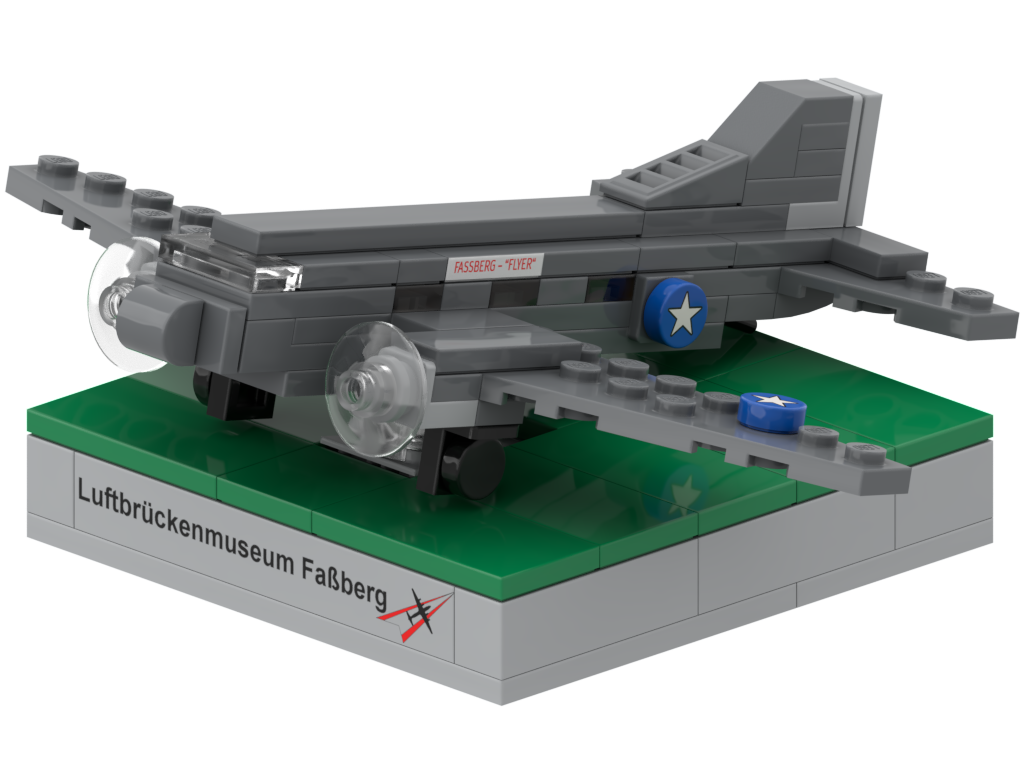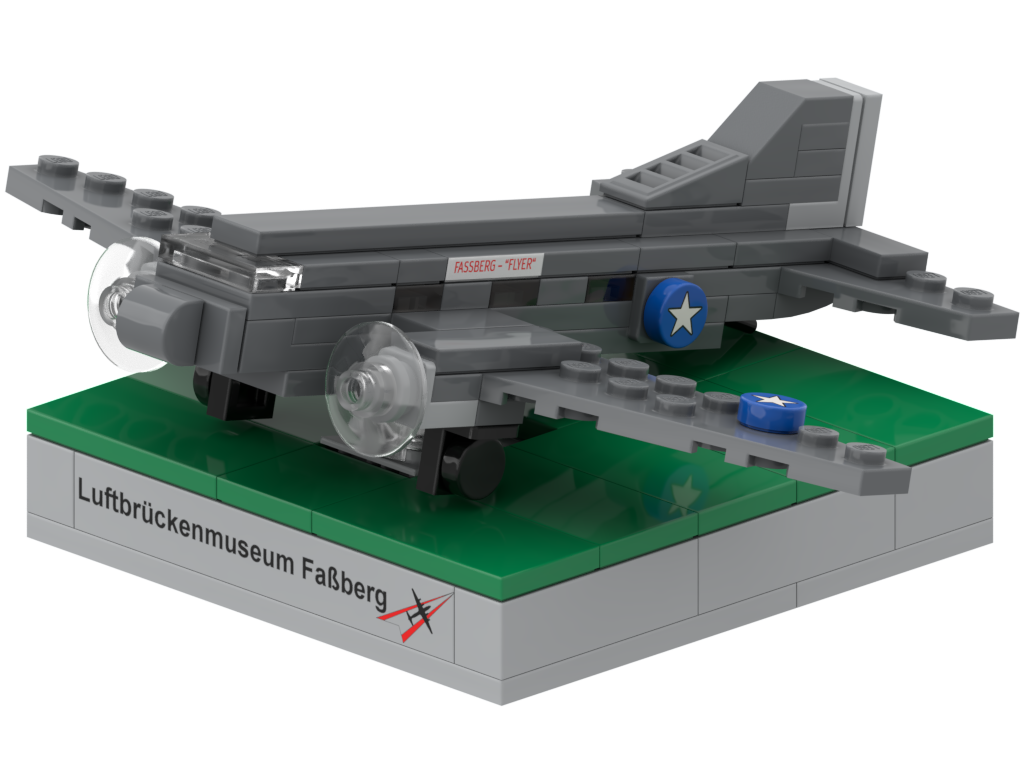The Brick Translator
Fassberg Flyer – kit from LEGO® bricks
Fassberg Flyer – kit from LEGO® bricks
Couldn't load pickup availability
The Berlin Airlift 1948/49
The Berlin Airlift was set up by the Western Allies after the Soviet occupying forces blocked all transport routes by land and water between West Berlin and West Germany on June 24, 1948. The trigger was the currency reform carried out in the three western zones on June 20. The Western Allies then set up the largest operation of its kind to date under the leadership of the military governor of the US zone, Lucius D. Clay, to keep West Berlin, which at the time had around 2.2 million inhabitants, alive.
Until the end of the blockade on May 12, 1949, flights were made every minute from several airfields in West Germany to the West Berlin airfields Tempelhof and Gatow, the provisional Tegel airfield built for the occasion, and to the Havel with British seaplanes. They transported everything that was needed in West Berlin and everything that was produced in Berlin for export back and forth by air. The planes were still in use until the end of September 1949, and were gradually withdrawn until the usual transport routes were re-established.
In this context, the term "raisin bomber" also came into use after the young American pilot Gail S. Halvorsen began dropping small parachutes filled with sweets for the children gathered under the incoming planes. This gave rise to an entire operation called "Little Vittles," and Gail S. Halvorsen later became commander of Tempelhof Airport from 1970 to 1974. He remained closely connected to Berlin and the Frankfurt-Berlin Air Bridge Association until his death in February 2022.
The Airlift Museum in Faßberg
In March 1990, the Airlift Museum was opened in Faßberg, Lower Saxony. The airfield in Faßberg, originally built in the 1930s as a covert location for the Luftwaffe, was mainly used to transport coal during the Berlin Airlift. The museum is dedicated to the deployment of British and American soldiers at this location and has a Douglas C-47 on display outside. Although it looks like a plane that was involved in the airlift, it is not the original.
The original, built in 1943, was used after the airlift in Norway, the USA and finally in Guatemala, where it finally crashed in 1994 and suffered irreparable damage. The example on display, of the same year, was originally in service with the US Army Air Force, then with the Turkish Air Force from 1949 to 1995. After the agreed transfer to the German Bundeswehr, the aircraft finally arrived in Faßberg on board an Airbus Beluga in 1998, where it was overhauled and placed in the museum.
The model by Ralf J. Klumb
After I had constructed models of the C-47 (civilian Douglas DC 3) and C-54 (DC 4), I contacted several organizations that strive to preserve the memory of the Berlin Airlift. The Airlift Museum in Faßberg was one of them, and during a personal meeting with the association's first chairman, Lieutenant Colonel Ludger Osterkamp, at the airfield festival in Gatow in summer 2023, we agreed to include this kit in our range.
The model is approximately 1:160 scale and features replica prints of the Fassberg model.
The four printed bricks included in this kit were supplied by our partner, IN creare from Braunschweig.
- Number of original LEGO® bricks: 102
- Dimensions of the model: 14.4 x 12.1 x 6.6 cm
Share


